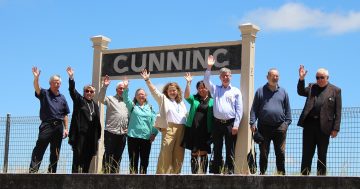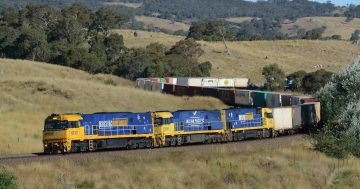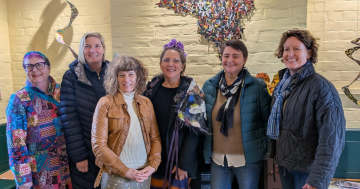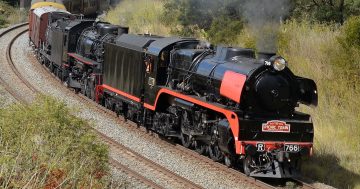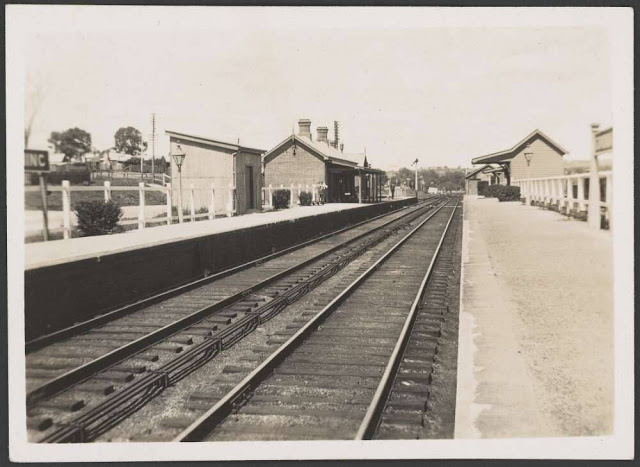
Gunning Railway Station back in the early 1940s. Photo: File.
Did you use the Gunning Railway Station? Have you got old photos of it, kept tickets from it or held memories that other people may be interested in?
You could play a part in its future.
Southern Tablelands Arts, Gunning and District Historical Society and the State Government’s Transport for NSW are working to revive the old Gunning Station to make it a new community hub. Not only will it house the village’s history, it will also be restored to its position as the centre of town.
But the community of Gunning and surrounding districts need help to tell the story.
The project team has just issued a plea for memorabilia of the station, both physical objects and personal memories from people who’ve had a connection to it.

The old Gunning Railway Station is set to become the town’s new cultural hub. Photo: File.
Having closed in 1989, today the station building stands almost silent. The XPT between Sydney and Melbourne still comes through daily as do freight trains and the occasional trip to Griffith, but little else.
In its heyday, Gunning was a centre for the growing and nationwide transportation of wool. Closing the station buildings put paid to an important piece of Southern Tablelands history.
The station officially opened in 1900 when Gunning was a thriving rural community and remains today as one of the best examples of a small, late Victorian country station. But it was first reported as “opening” by the Sydney Mail and NSW Advertiser on Saturday, 6 November 1875.
The day was a great success – except for the official luncheon. A newspaper report claimed Mr Shipway of Yass provided the lunch “in excellent style” but “a boisterous westerly wind, which blew a perfect gale” blew down the tent that housed the food. According to the report, VIPs had to brave the elements as they ate outside, toasting each other and absent friends.
On opening day, the first train reached Gunning at about 1 pm and a band even struck up the national anthem. Gunning, the newspaper reported, “wore a holiday aspect” with shops closed and flags flying.
Andrew Killingsworth of Transport for NSW – the NSW Government arm of the project working with Southern Tablelands Arts and the Gunning and District Historical Society on the project – described the revival as a labour of love.
“What we want to do at Gunning is show the past while celebrating a new future, give the station a new lease on life,” he said.
“Stations like Gunning were always the heart of a community back in the day; they told all the contrasting stories. Like the ones when people went off to war and the joy when they returned.”
Even from its earliest days, Gunning Station was on track to make history. From the line’s opening back in 1875, it was an early prototype of later standard station designs. More than 100 years later in 1999, it was listed on the NSW State Heritage Register because of its “rare characteristics of cultural or natural history of NSW”.
Mr Killingsworth said all the station’s buildings would be brought back to life through the project: from the stationmaster’s office to the “ladies only” waiting room with its adjacent “little room”.
He said a significant amount of money would be spent on the project to ensure its important history was respected.
“The project team is very passionate about this: we have some special people on board to make it happen like architects, construction workers and specialist tradies,” he said.
Where possible, he said, local tradies would also be employed.

An excerpt of the official opening of the Gunning Railway Station in 1875 as reported in the Sydney Mail and NSW Advertiser on Saturday, 6 November 1875. Photo: Trove.
Big project plans include attaching a front verandah to the building after finding the original 1875 plans in the NSW Railway Archives.
Much has changed in Gunning over the past 100 years, yet much has not. Its streets – made wide enough so the horse and bullock drays could pass through – retain their impressive girth. Natural grass is still plentiful and affords good pasture for flocks and herds.
People with memories of Gunning and its railway station, especially those with photographs or other memorabilia, are invited to play a role in the station’s new life as a cultural hub. Email the Gunning and District Historical Society with your contributions at [email protected]








